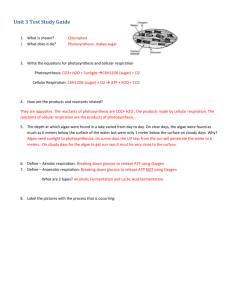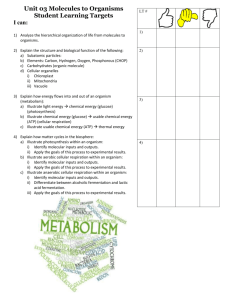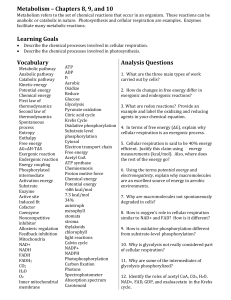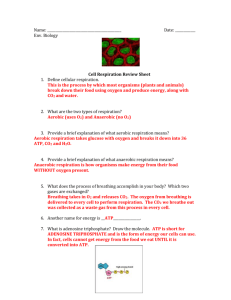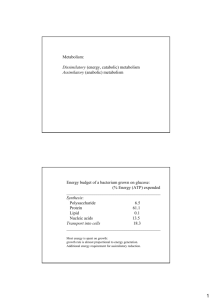Cellular Respiration Study Guide KEY
advertisement
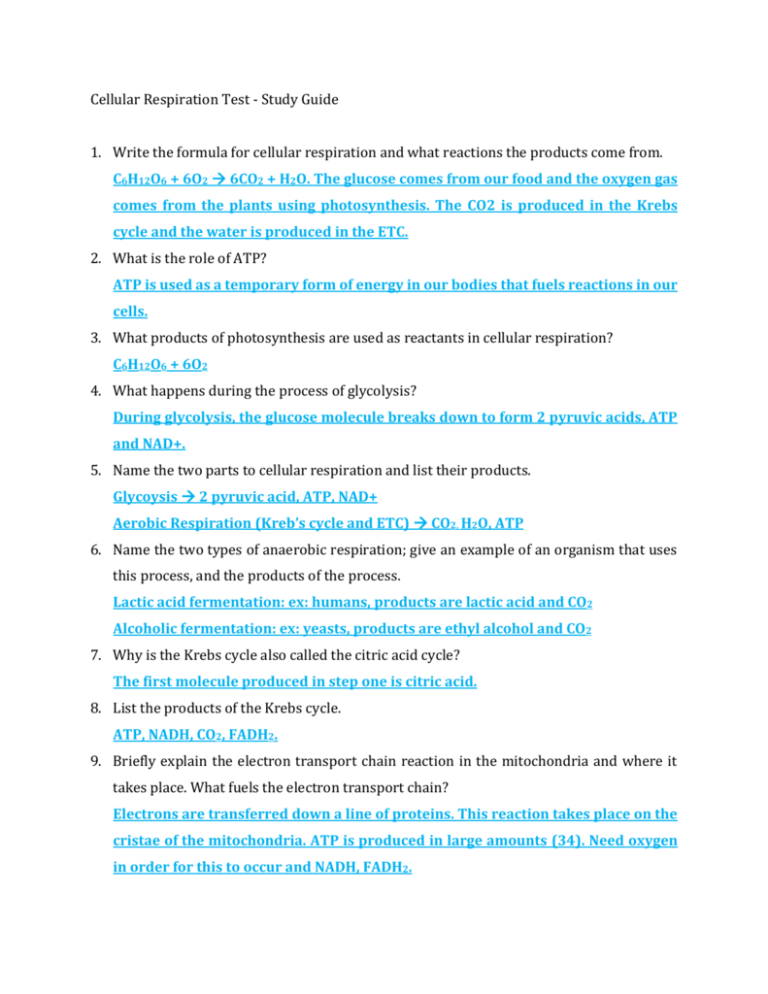
Cellular Respiration Test - Study Guide 1. Write the formula for cellular respiration and what reactions the products come from. C6H12O6 + 6O2 6CO2 + H2O. The glucose comes from our food and the oxygen gas comes from the plants using photosynthesis. The CO2 is produced in the Krebs cycle and the water is produced in the ETC. 2. What is the role of ATP? ATP is used as a temporary form of energy in our bodies that fuels reactions in our cells. 3. What products of photosynthesis are used as reactants in cellular respiration? C6H12O6 + 6O2 4. What happens during the process of glycolysis? During glycolysis, the glucose molecule breaks down to form 2 pyruvic acids, ATP and NAD+. 5. Name the two parts to cellular respiration and list their products. Glycoysis 2 pyruvic acid, ATP, NAD+ Aerobic Respiration (Kreb’s cycle and ETC) CO2, H2O, ATP 6. Name the two types of anaerobic respiration; give an example of an organism that uses this process, and the products of the process. Lactic acid fermentation: ex: humans, products are lactic acid and CO2 Alcoholic fermentation: ex: yeasts, products are ethyl alcohol and CO2 7. Why is the Krebs cycle also called the citric acid cycle? The first molecule produced in step one is citric acid. 8. List the products of the Krebs cycle. ATP, NADH, CO2, FADH2. 9. Briefly explain the electron transport chain reaction in the mitochondria and where it takes place. What fuels the electron transport chain? Electrons are transferred down a line of proteins. This reaction takes place on the cristae of the mitochondria. ATP is produced in large amounts (34). Need oxygen in order for this to occur and NADH, FADH2. 10. Explain the difference between oxidation and reduction. Oxidation reactions occur when a molecule loses an electron. Reduction reactions occur when a molecule gains an electron. 11. Label the following diagram and label where the Krebs cycle takes place and the electron transport chain. Inner membrane Outer membrane Cristae (ETC occurs here) Mitochondrial matrix (Krebs cycle occurs here) 12. How are photosynthesis and cellular respiration linked together? Cellular respiration uses the products of photosynthesis as their reactants and vice versa. 13. Explain carbonation in sparkling wines and champagne. In process of alcoholic fermentation, CO2 and ethyl alcohol are produced. If the CO2 is not released the gas will infuse into the liquid and make it carbonated. 14. Summarize our results from the cellular respiration lab. How did exercise affect the rate of respiration? Exercise increases the rate of respiration because our bodies need more O 2, we increase our heart rate and breathe harder. 15. What can you infer about a patient that has an increased amount of lactic acid in their muscles? A patient that has an increased amount of lactic acid in their muscles indicates that their muscle cells did not receive enough oxygen gas during exercise and had to switch from aerobic respiration to lactic acid fermentation.

